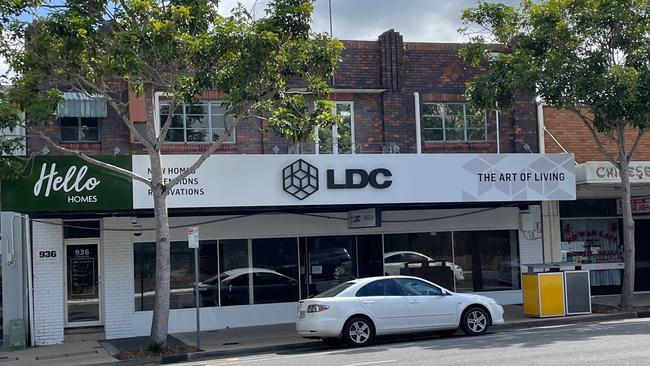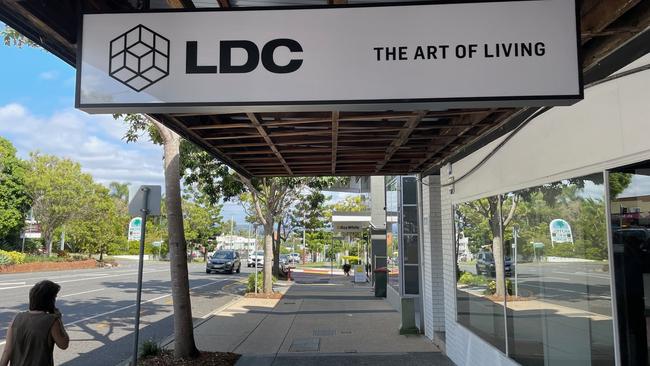Brisbane builder LDC goes into voluntary administration
The first Brisbane builder to go bust in 2023 owes $7.03m and has left more than 130 subbies out of pocket and 48 homeowners with unfinished properties.
QLD Business
Don't miss out on the headlines from QLD Business. Followed categories will be added to My News.
The first Queensland builder in 2023 has collapsed, owing creditors more than $7m and leaving almost 50 uncompleted projects across the state’s south east.
LDC Pty Ltd was based in Holland Park in Brisbane’s south and liquidator Bill Karageozis, of Mcleods Accounting, took control of the troubled builder on Friday.
Initial investigations show the company owes subbies and other creditors about $7.03m and the company, which started in 2018, will be wound up.
“It’s very early days. At this stage we have very limited financial information. It obviously owes a lot more than it owns in assets. As you know these things take time,” Mr Karageozis said.
“There are 48 building sites affected in South East Queensland and we’ve reached out to the QBCC and they’re aware of the company going into liquidation.
“They will contact the lot owners who have had partially completed contracts. We will work with the QBCC and make sure they get what they need.”
LDC has two directors Azzemm Dannaoui and Hou Ming Law. The company is owned by Mr Dannaoui and Edison Law Pty Ltd. Messages left at LDC’s head office and with Mr Dannaoui were not returned.

Documents lodged with the Australian Securities and Investments Commission shows LDC currently owes $7.032m. That figure was made up of more than 130 subcontractors and suppliers, LDC shareholders and three other parties who lent just over $2m to the company, the ATO and Commonwealth Bank.
According to a report to creditors filed with ASIC, LDC owns land worth more than $1m and has $304,000 worth of work in progress.
Mr Karageozis said at the time of his appointment LDC had 45 full time, part-time and casual staff.
“We are looking into the affairs of the company and see why it went down and try to get as much money as possible for the people who are owed money,” he said.
According to QBCC records, LDC completed 29 projects worth $19.4m in 2021-22 and wrapped up 59 projects worth $31.1m the previous year.
Last week administrators were also appointed to Melbourne builders Hallbury Homes which had 50 unfinished projects.
More than 5500 Australian companies went into voluntary administration or liquidation in 2022 with building companies such as Probuild and Oracle Homes among the high profile collapses.
Revive Financial director Jarvis Archer said the Australian Taxation Office’s return to recovering tax debts after a two-year hiatus drove a lot of the increase in insolvencies. “Director warning letters and director penalty notices triggered company directors to deal with their hefty tax debts that accrued during the pandemic,” he said. “What we’re seeing from struggling business owners … is sheer exhaustion.”
Even profitable building companies are struggling.
The country’s largest private construction companies have seen a major slide in profits despite total revenues rising almost 10 per cent to $14.2bn in the last 12 months, filings with ASIC show.

With labour shortages and supply chain difficulties affecting operations, the combined profit of 12 major builders fell more than 50 per cent to $122.4m, according to analysis of financial documents.
For 2021 the same group of 12 builders recorded profits of about $255.6m.
Of the dozen companies, only two civil construction-focused groups recorded a profit increase.
One, Brisbane’s BMD Group, owned by the Power family, recorded a 130 per cent increase in profits for the 12 months to the end of June to $39.5m – paying $8.5m in dividends, compared to $9m for the previous financial year.
Russ Stephens, the co-founder of the Association of Professional Builders, said interest rate rises has seen housing demand soften.
“A majority of our members are fully booked so it won’t impact this year in the short-term,” he said. “The sales process in residential construction can take between three and 12 months depending on the complexity of the design. The effect of those initial inquiries softening up is like a delayed impact in terms of construction work in 2024.
“Margins will slowly improve but the danger is as the market starts to soften, builders will have to be better at marketing which has almost been forgotten skills now in a market which had such strong demand.”
Mr Stephens said some of the biggest names in the industry would find themselves in trouble in 2023.
“Those large building companies that had contracts signed and could not start building straight away saw the costs of construction go up in 2022 and they would have lost a lot of money on those jobs,” he said. “Once the cash inflows start to slow down those companies will find themselves in trouble.”
Do you know more? Contact: christopher.herde@news.com.au




